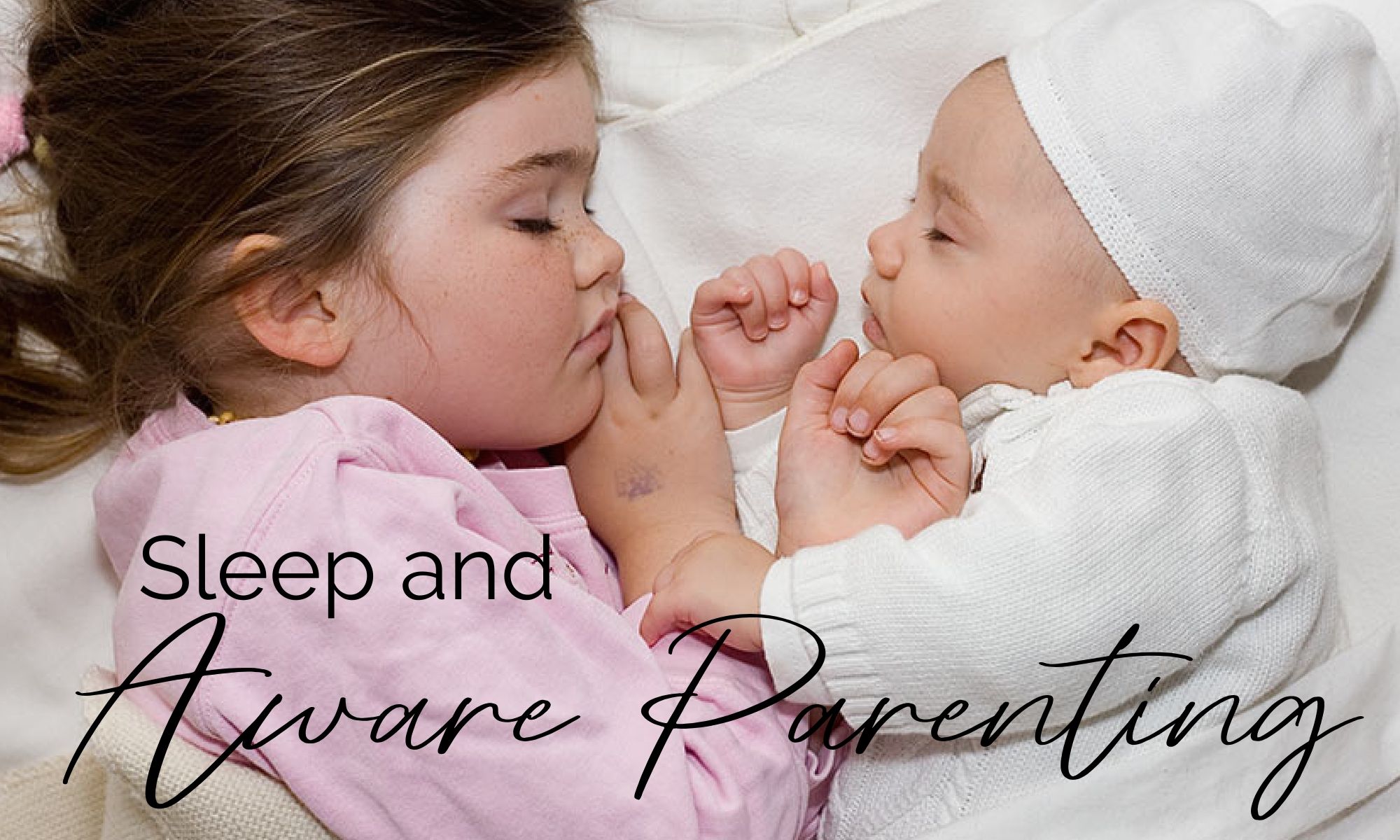Sleep and Aware Parenting (you can see the map and chart HERE).
Sleep is a natural physiological mechanism.
If you have seen families in indigenous cultures, you might see something very different with sleep to what we see in colonised cultures.
What have we lost connection with, and what might we need to add in to the mix, because of living in colonised cultures?
Babies, children and adults need three core things in order to sleep restfully, and to sleep until our needs for enough sleep have been met.
1. To feel tired.
Tiredness is a clear signal from the body that it is ready for sleep and needs sleep. Commonly, we might see a child rubbing their eyes, yawning, or losing coordination.
2. To feel connected.
If we look at human history, we can see again why this exists. A child who was alone in a hunter-gatherer community would have been at high risk at night. Not feeling connected would have signalled to the body that it isn’t safe to sleep.
The younger a child is, the more they need to actually have physical closeness whilst they are going to sleep. With repeated experiences of closeness, this experience becomes internalised, particularly if there has been physical closeness and connection not long before going to sleep.
We can help children feel connected by resourcing ourselves so we can offer at least some degree of present connection in the evening before sleep.
Attachment play also offers connection, particularly body-contact games, which signal to the body that there is physical closeness and support.
3. To feel relaxed.
Often in colonised cultures we think we need to do lots of things to children to help them go to sleep. And sometimes those things can be helpful. A calm environment, muted lights, relative quiet. But if we are providing all of those things and more, and a child is antsy, agitated, or restless, (as long as there are no other physical causes such as food sensitive, allergies, polyester sheets, WiFi etc), then it can often be that we have missed, or not understood, a child’s own innate relaxation mechanisms.
People often say that children are fighting sleep. But from this paradigm, it’s more often that we don’t fully understand, or trust, the wisdom of their natural relaxation mechanisms, so it is often us that are fighting those natural mechanisms.
Relaxation mechanisms include:
Talking – if our child is verbal and wants to talk about their day, us listening with loving presence can be part of helping them release and relax.
Play – is a powerful, and often misunderstood, relaxation mechanism that creates both connection and relaxation; especially if there’s laughter involved (no tickling), which releases light fears, frustrations and powerlessness. If a child is inviting silly or goofy, and we join in with them with warmth and goofiness, this is us cooperating with their relaxation mechanisms.
What happens if they want to keep on playing and playing, but they’re clearly tired, or we’re reaching our capacity to play? This is when we can set a Loving Limit: “I see you really want to keep playing, sweetheart, and I’m not willing to play any more.” Often, the play and the Loving Limit can help bring any deeper feelings that were sitting there, preventing them from feeling relaxed. We can then lovingly listen to the feelings.
What happens if they start getting hitty or pinchy or rough in the play? Again, we can set a Loving Limit – “I’m not willing for you to do that, sweetheart, and I’m right here, and I’m listening.” – along with the minimum action to stop anyone getting hurt. And again, we can listen to the tears and feelings that are underlying the roughness.
Crying and tantrums – yes, the old adage, “it will all end in tears,” is part of this. Tears and tantrums are one of the most misunderstood relaxation mechanisms. When we are tired, we are less able to repress feelings, which is all part of our body’s amazing wisdom and capacity for release and relaxation. When our child is ‘whiny,’ or is starting to cry over something apparently really small that doesn’t make sense, of they bust into tears after playing, or when we set a Loving Limit, this is their wise body helping release the feelings that are sitting there, ready to be expressed. If we have the capacity to be present and listen lovingly, they can express the feelings along with all the associated stress hormones and physical tension, and they can come out the other side feeling much more relaxed.
The more we support ourselves to feel resourced enough in the evening (not an easy thing in colonised cultures!), the more we can meet a child’s needs for connection and cooperate with their natural relaxation mechanisms so that they feel a true and natural sense of relaxation in their bodies, so that they can sleep restfully and sleep for as long as their body truly needs.
If you want to learn more about the Aware Parenting approach, I have a Sound Sleep and Secure Attachment with Aware Parenting Course. However, if you’re new to Aware Parenting, I recommend the Making Friends with Children’s Feelings Course first.
